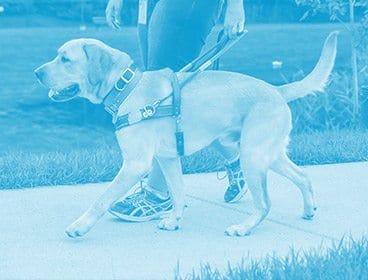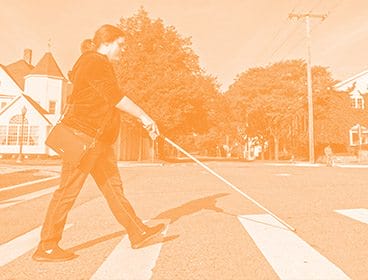
Euthanasia
The decision to euthanize your dog may be one of the most difficult choices you face in your lifetime. It is hard to make this life-ending determination for someone who cannot tell you their wishes; yet, this judgment call must be made. Emotional issues such as guilt, grief and uncertainty, as well as financial and/or time commitment matters are a part of deciding whether to treat an illness. Family members with differing opinions or philosophies may be involved. The decision process is arduous and everyone dreads its necessity.
You likely have questions about euthanasia including: how to tell whether now is the right time, what to expect and what the procedure entails. This document is meant to guide you through these difficult issues so you can be certain that you made the right decision for your dog.
What Time is the Right Time?
Some dogs become debilitated by age or disease to a point where their life quality deteriorates to an unacceptable level. This does not mean that improvement is not possible. It is important to speak with your veterinarian about your dog’s condition and what may be done to improve its quality of life.
Many medical issues that seem hopeless are surprisingly easy to alleviate or even solve. Long-standing in-home urination problems may just be a bladder infection that can be resolved with antibiotics or sphincter tightening remedies. Arthritis may be treated with medication. Unhealed wounds may be related to an allergy and not cancer. Every veterinarian has stories of animals assumed by their owners to have terminal illness that turned out to be easily treated issues.
It is best not to make assumptions about the reversibility of your dog’s condition before consulting your veterinarian. Find out what type of supportive care you may be able to perform as a primary caregiver and the associated expenses. It is important to involve your vet early. Learn about treatment options and costs before making euthanasia decisions.
When You've Done All You Can: Life Quality Evaluation
As much as we dislike it, owners have limitations of what they are capable of doing for their dogs and some dogs are not willing to cooperate with the treatments that may help them recover. There is a point where all the love, attention, therapies and special foods are just not enough. Saying goodbye is emotionally devastating on its own without having to suffer through uncertainty in your decision.
Some people may tell you that you will simply “know” the right time for your dog; however, this is not true. Determining your dog’s quality of life is not completely intuitive. Fortunately, the following criteria can help you evaluate your dog’s quality of life.
- Does your dog still enjoy its work and favorite activities? A senior dog does not necessarily need to continue chasing balls or jumping after Frisbees. It may enjoy working, sleeping comfortably in favorite resting spots, your company, etc.
- Is your dog eating? A quality life involves eating or at least interest in food. A dog that is hungry has vitality that must be considered, though this is not the only consideration.
- Is your dog comfortable? Your dog should be free of debilitating pains, cramps, aches or even the psychological pain that comes from the development of incontinence in a dog that has been housebroken its entire life.
Quality of Life Scale: The HHHHHMM Scale
Dr. Alice Villalobos, a veterinarian who started a quality of life program for terminal animals called Pawspice, has published a scoring system for life quality called the HHHHHMM scale. The letters stand for: Hurt, Hunger, Hydration, Hygiene, Happiness, Mobility, and More good days than bad. Having a quality of life inventory is helpful in viewing your dog’s situation in a more objective light.
Score your dog using a scale of 1 to 10 for each category. A total over 35 points represents acceptable life quality.
- Hurt: Adequate pain control, including ability to breath, is first and foremost on the system. Is your dog’s pain successfully managed? Is oxygen necessary?
- Hunger: Is your dog eating enough? Does feeding by hand help? Does your dog require a feeding tube?
- Hydration: Is your dog dehydrated? Does your dog require subcutaneous fluids (delivered under the skin) once or twice daily to supplement fluid intake?
- Hygiene: Is brushing and cleaning your dog, particularly after elimination, enough to keep it free of sores? Are you able to keep your dogs’ wounds clean?
- Happiness: Does your dog express joy and interest? Is your dog responsive to things around it (family, toys, etc.)? Is your dog depressed, lonely, anxious, bored or afraid? Can your dog’s bed be moved closer to family activities and not be isolated?
- Mobility: Can your dog get up without assistance or does your dog need human or mechanical help (e.g., a cart)? Does your dog enjoy going for a walk? Is your dog having seizures or stumbling? (Some people feel euthanasia is preferable to amputation, yet a dog with limited mobility that is still alert and responsive can have a good quality of life as long as owners are committed to helping the dog.)
- More good days than bad: When bad days outnumber good days, quality of life might be compromised. When a healthy human-animal bond is no longer possible, the caregiver must be made aware the end is near. The decision needs to be made if the dog is suffering. If death comes peacefully and painlessly, that is okay.
After the Decision is Made
Should you be present for the procedure?
This is a very personal decision and there is no right or wrong answer. Many people simply cannot be present for emotional reasons, others want their dog to have a family member present throughout the process. It is best to decide in advance which family member(s), if any, should be involved. Every owner wants to think of euthanasia as a gentle slipping into death much like falling asleep; in reality, your dog will probably not close its eyes and there may be a final twitch, gasp or even urination. Some veterinary clinics do not allow owners to be present for euthanasia as it may be disturbing to the owner. To help ease the process, a tranquilizer may be given first to alleviate some of the physical reactions.
How is the procedure performed?
Not all clinics have the exact same steps, but the following is typical.
Appropriate forms are signed before the procedure takes place. If the owner is to be present, an intravenous catheter (IV tube) may be placed in the dog. This takes a few minutes and is usually done while the owner deals with paperwork and/or makes payment. The payment transaction is done prior to the procedure so the owner will not have to sign checks or credit card slips following the procedure.
The intravenous catheter serves several purposes. First, the euthanasia solution is painful if administered outside the vein. The catheter ensures clean access to the vein even if the owner is holding their dog. The catheter also allows for a sedative to be administered prior to the euthanasia solution. Not all veterinarians use catheters.
After the catheter is placed, the owner may spend some last time alone with their dog if desired.
The procedure itself is very fast. If a sedative is used, it is given first so that the dog is sleeping prior to being euthanized. The euthanasia solution, generally dyed a bright color so that it cannot be mistaken for anything else, is delivered and death comes peacefully in a matter of seconds. The owner is usually allowed to remain with their dog for a final private goodbye. At the end of this time, the owner simply exits the room when ready and the clinic staff takes over. Let your veterinarian know in advance if you would like a lock of your dog’s fur or its collar as a keepsake.
Home Euthanasia
Some clinics provide this service and there are house call euthanasia services in some areas. Lap of Love is one company that may be able to put you in touch with a veterinarian in your area that can provide in-home hospice care and euthanasia.
Aftercare
You have several options regarding your dog’s remains. In some municipalities, city ordinances preclude burying animals at home. Otherwise, a cremation service is used. Typically, you can choose between a group cremation and an individual cremation. In a group cremation, you do not receive your dog’s ashes. An individual cremation costs more, but you will receive your dog’s ashes.
Adapted from Villalobos, A.E., Quality of Life Scale Helps Make Final Call, VPN, 09/2004, for Canine and Feline Geriatric Oncology Honoring the Human-Animal Bond, by Blackwell Publishing, Table 10.1, released 2006. Date Published: 8/25/2003



